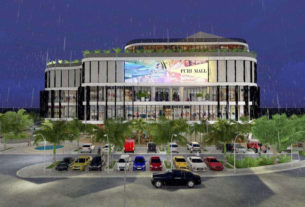The Asian Development Bank (ADB) said the move ushered in “a new era” for growth, development and poverty reduction in the communist country, where the majority of people still live on less than two dollars a day.
“The importance of this hydroelectric project to the Lao economy cannot be overemphasised,” Haruhiko Kuroda, the ADB president, said at a ceremony to formally inaugurate the Nam Theun 2 power station.
Critics say tens of thousands of people continue to be affected by the project, which has been dogged by years of controversy.
After five years of construction and development costs of more than 1.4 billion dollars, the plant began supplying neighbouring
With a generating capacity of 1,070 megawatts, the development is jointly owned by communist
The project on the
“Funds are earmarked for primary education and health service improvement, rural electrification, and other nationwide poverty alleviation programmes,” said the ADB.
According to an advance copy of his speech, Kuroda said the project will also reduce
The ADB said the power project will contribute seven to nine percent of the country’s national budget and approximately three percent of gross domestic product (GDP) growth.
GDP last year was almost 5.6 billion dollars.
However, environmentalists have long-opposed the Nam Theun 2 project.
US-based watchdog International Rivers says there are still questions about the sustainability of livelihoods for the more than 6,000 villagers relocated for the dam, and tens of thousands more downstream.
“It’s way too early to call this project a success,” said Ikuko Matsumoto, Lao programme director for the group.
The ADB said the vast majority of relocated villagers consider their lives better.
“There are, of course, still challenges ahead to ensure sustainable livelihoods for affected people, monitor and respond to downstream impacts and protect the watershed area, which represents one of the few remaining wildernesses in the planet,” Kuroda said.
Logging and outside commercial interests threaten the area’s natural resources, posing a major challenge, said the statement from the ADB, which provided 120 million dollars of the dam’s funding.
Most power goes to Thailand but the plant also meets up to 20 percent of peak Lao electricity demand, the operator Nam Theun 2 company (NT2) said.
“NT2 has defied the doubters who claimed such a complex project couldn’t be done in a poor country,” said Sri Mulyani Indrawati, managing director of the World Bank Group, which supervised and monitored the development.
Eight additional dams are proposed on the mainstream
Those projects “could have profound and wide-ranging socioeconomic and environmental impacts”, according to a study released in October by the Mekong River Commission, an inter-governmental advisory body.
Source:

